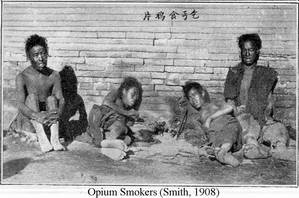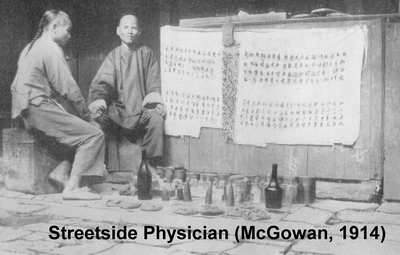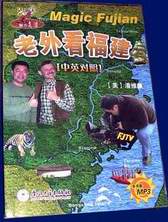![]() Click
to
Access
Click
to
Access
OUTSIDE China
![]() Click
to Access
Click
to Access
INSIDE
China ![]()
TRAVEL LINKS
![]() Xiamen
Xiamen
![]() Gulangyu
Gulangyu
![]() Jimei
Jimei
![]() Tong'an
Tong'an
![]() Jinmen
Jinmen
![]() Zhangzhou
Zhangzhou
![]() Quanzhou
Quanzhou
![]() Wuyi
Wuyi
![]() #1Fujian
Sites!
#1Fujian
Sites!
![]() Fujian
Foto Album
Fujian
Foto Album
![]() Books
on Fujian
Books
on Fujian
![]() Readers'Letters
Readers'Letters
![]() Ningde
Ningde
![]() Zhouning
Zhouning
![]() Longyan
Longyan
![]() Sanming
Sanming
![]() Putian
Putian
![]() Bridges
Bridges
![]() Travel
Info,
Travel
Info,
![]() Hakka
Roundhouses
Hakka
Roundhouses
![]() Travel
Agents
Travel
Agents
MISC. LINKS
![]() Amoy
People!
Amoy
People! ![]()
![]() Darwin
Driving
Darwin
Driving ![]()
![]() Amoy
Tigers
Amoy
Tigers
![]() Chinese
Inventions
Chinese
Inventions
![]() Tibet
in 80 Days!
Tibet
in 80 Days!![]()
![]() Dethroned!
Dethroned!
![]()
![]() Misc.Writings
Misc.Writings
![]() Latest
News
Latest
News
![]() Lord
of Opium
Lord
of Opium
![]() Back
to Main Page
Back
to Main Page
![]() Order
Books
Order
Books![]() Xiamenguide
Forum
Xiamenguide
Forum 

Dr. John Otte: Surgeon,
Evangelist, Architect, Carpenter
![]()
![]()
![]() Otte's
Last 10 Days
Otte's
Last 10 Days ![]() "Hope
Hospital"
"Hope
Hospital" ![]() "Major
Frank Otte"
"Major
Frank Otte"
![]() "Otte
Memorial"
"Otte
Memorial"
![]() "Patrick
Manson--Father of Tropical Medicine"
"Patrick
Manson--Father of Tropical Medicine"
![]() "How
Ancient China Discovered (and lost!) Surgery"
"How
Ancient China Discovered (and lost!) Surgery"

Dr. John Otte not only founded but also
designed and built (with his own hands) three hospitals, including Gulangyu’s
historic Hope Hospital. During Otte’s
copious free time he designed such Gulangyu edifices as the islet’s
most conspicuous land-mark, the red-domed “Eight Diagrams Building”
(Bagualou).
From his youth Otte wanted to preach, but diphtheria hurt his voice, and
since he loved science more than seminary, he became a missionary doctor
instead. After graduation from the University of Michigan, he did a year
of post-graduate work in Holland, which gained him experience, as well
as the financial support of the Dutch, who valued his selfless service
to their community.
Otte and his wife Frances Phelps Otte arrived in Amoy on January 13, 1888,
and began medical work in the backwater village of Xiaoxi (Pinghe County)
which had a small but thriving church under the Chinese pastor Iap Han-cheong.
Neerbosch Hospital While Otte would have preferred
Amoy or Gulangyu, he put his heart into his work. He designed and helped
build the two-storey brick hospital, and lacking a capable local carpenter,
built the wooden furniture himself. Locals initially opposed him, but
the energetic missionary doctor/architect/carpenter quickly won not only
their hearts but also their financial support. Mandarins and wealthy Chinese
happily augmented Otte’s meager $1200 building fund, and peasants
volun-teered their labor. On March 5, 1889, pastor Iap dedicated Neerbosch
Hospital, which was named after a Dutch town that donated funds for the
hospital because Otte had cared for Dutch orphans during a measles epidemic.
Eighty Chinese patients arrived the first day, and within weeks patients
were lining up at 2 a.m. each day for the 5 a.m. opening. Otte wrote,
“All classes came: the well-to-do and the beggar; the proud scholar; the attaché of the Mandarin as well as the untutored toiler of the soil… In the first three months of operation, 1,500 different patients visited the hospital and received treatment 7,000 times.”
Back to top
Humanity's Great Curse By the time of Otte’s 1895 furlough, Neerbosch hospital had doubled in size and Otte had treated 50,000 out-patients, over 2,400 in-patients, and performed over 1,500 operations. A Chinese doctor from Zhangzhou whose son Otte had treated donated a microscope and the local mandarin funded a refuge for addicts of opium, which Otte called one of humanity’s greatest curses. Otte wrote,
“England forced opium upon China. Not a single intelligent native doubts this from Li Hung Chang down. This is England’s sin for which all the thousands poured into the coffers of the various missionary societies cannot atone.”
Otte tried to reduce
addicts’ suffering by gradual reduction of opium intake, but this
did not lessen the agony and only prolonged the pain. Otte described their
pain as "indescribable…if ever I have been able to conceive
what the sufferings of hell must be,” [it was their suffering].
Otte treated 66 addicts from July 1891 to July 1892, but wrote that even
if they stayed off the drug, they would suffer physically for the rest
of their lives with indigestion, neurasthenia, bowel problems and impotency.
They would be so miserable that many would return to opium to alleviate
the pain. Still, many remained off the drug—and even returned with
addicted friends in tow.
Back to top
Otte’s “Opium Refuge” “For the first five days these patients are considered and treated as maniacs. They are locked up, and their food is handed them through a barred window. It is only in this way that they can be kept in the hospital.
[Of five patients] “The first day all went well, but the next day they became raving maniacs. Night and day they did nothing but crawl on the ground and howl like wild beasts; their room became filthy, and, when the coolie went in to clean it, four men [were needed] at times to watch the room to keep the patients from scaping…Whenever the physician or assistant appeared, they would beg on their knees to be let out, if only for a few minutes. When reasoned with, they said they were doing their best to keep quiet, but they seemed to have lost all control. Knowing this, they were patiently and kindly treated. When left alone, they made strenuous efforts to escape, and finally succeeded in wrenching off a foreign lock from the door. This was discovered in time, and heavy iron staples were clenched on the inside, and the door secured on the outside with a padlock. But on the fifth night they bent the staples with their fingers, so as to open the door. They then jumped down from a verandah twelve feet high and made their escape.”
Back to top
How Ancient China Discovered (and lost!) Surgery
(From McGowan, 1913, pp.176-9)“…There was not a doctor in the Empire who knew anything of anatomy and for any one of them to have performed a serious surgical operation would have meant certain death to the patient. [But]…
“Tradition tells the story of one famous doctor [Huatuo], who lived in the misty past, and whose prescriptions form part of the medical library of every regular practitioner, that is intensely interesting. He seems to stand out more prominently than any of the others who have become conspicuous in the history of medicine, because he evidently had the ambition and perhaps the genius to inaugurate a new system in the treatment of diseases. He evidently felt there were occasions when the knife ought to be used if life were to be saved.
“On one occasion a military officer had been severely wounded in the arm by a poisoned arrow in a great battle in which he had taken part. The doctor, who for long centuries has been a god, and shrines and temples have been erected in which his image sits enshrined, was summoned to his assistance. He saw at a glance that unless heroic measures were at once adopted the man would die of blood-poisoning.
Contrary to the universal practice then in vogue, he cut down to the very bone, extracted the arrow, and scraping away the poison that might have been injected into the flesh, he bound up the gaping wound, using certain soothing salves to assist Nature in her process of healing.
“The result proved a great success, and might have been the means of introducing a new era in the treatment of diseases throughout China.
“Not long after a high mandarin [Caocao], who had heard of the wonderful cure, summoned the same doctor to prescribe for him. He had been greatly troubled with pains in his head, and no medical man that had attended him had been able to give him any relief. His case having been carefully diagnosed, the doctor proceeded to tell him what he thought ought to be done.
“I find,” he said, “that what really is the matter with you is that your brain is affected. There is a growth upon it, which, unless it is removed, will cause your death.
Medicine in this case,” he continued, “will be of no avail. An operation will have to be performed. Your skull must be opened, and the growth that is endangering your life must be removed.
“The thing, I think, can be safely done, and your health will be perfectly restored, and you may continue to live for a good many years.
“If you are pleased to confide in me, I have full confidence in myself that I can do all that is needed to restore you to perfect health.
“Whilst he was talking a cloud had been slowly gathering over the mandarin’s face. His eyes began to flash with excitement and a look of anger to convulse his face. In a voice tremulous with passion, he said: “You propose to split open my skull, do you? It is quite evident to me that your object is to murder me. You wish for my death, but I shall frustrate that purpose of yours by having you executed.” Calling a policeman, he ordered him to drag the man to prison, whilst he gave orders to an official who was standing by that in ten days hence the doctor should be decapitated for the crime of conspiring against his life.
“During the days he was in prison he so won the heart of the jailer by his gentleness and patience that he showed him the utmost devotion and attention. The evening before his execution, he handed over to him some documents that he had been very carefully preserving, and said, ‘I am most grateful to you for the kindness you have shown me during the last few days. You have helped to relieve the misery of my prison. I wish I had something substantial to give you to prove to you my appreciation of the sympathy and tender concern you have manifested towards me.
“’There is one thing, indeed, that I can bestow on you, and that is the manuscripts of all the cases I have attended. These,” he said, handing them to the jailer, “will raise your family to wealth and honor for many generations yet to come. They explain the methods I have employed in the treatment of disease. Never part with them; neither let the secrets they contain be divulged by any of your posterity, and so long as your descendants are faithful to them poverty shall never shadow the homes of your sons and grandsons nor of their children after them.’
“Next day this great medical genius was foully put to death merely to satisfy the caprice of an ignorant official, and the first dawn of surgical enterprise was eclipsed by his death, and many a tedious century would have to drag its weary way along before the vision that had died out in blood would again appear to deliver the suffering men and women of China.”
![]() Favorite
Fujian Sites
Favorite
Fujian Sites ![]() Fujian
Foto Album
Fujian
Foto Album ![]() Xiamen
Xiamen
![]() Gulangyu
Gulangyu
![]() Fujian
Guides
Fujian
Guides ![]() Quanzhou
Quanzhou
![]() Zhangzhou
Zhangzhou
![]() Longyan
Longyan
![]() Wuyi
Mtn
Wuyi
Mtn ![]() Ningde
Ningde
![]() Putian
Putian
![]() Sanming
Sanming
![]() Zhouning
Zhouning
![]() Taimu
Mtn.
Taimu
Mtn. ![]() Roundhouses
Roundhouses
![]() Bridges
Bridges
![]() Jiangxi
Jiangxi
![]() Guilin
Guilin
![]() Order
Books
Order
Books![]() Readers'
Letters
Readers'
Letters
Last Updated: May 2007
AMOY
MISSION LINKS
![]()
![]() A.M.
Main Menu
A.M.
Main Menu
![]() RCA
Miss'ry List
RCA
Miss'ry List
![]() AmoyMission-1877
AmoyMission-1877
![]() AmoyMission-1893
AmoyMission-1893
![]() Abeel,
David
Abeel,
David
![]() Beltman
Beltman
![]() Boot
Family
Boot
Family
![]() Broekema,
Ruth
Broekema,
Ruth
![]() Bruce,
Elizabeth
Bruce,
Elizabeth
![]() Burns,
Wm.
Burns,
Wm.
![]() Caldwells
Caldwells
![]() DePree
DePree
![]() Develder,
Wally
Develder,
Wally
![]() Wally's
Memoirs!
Wally's
Memoirs!
![]() Douglas,
Carstairs
Douglas,
Carstairs
![]() Doty,
Elihu
Doty,
Elihu
![]() Duryea,
Wm. Rankin
Duryea,
Wm. Rankin
![]() Esther,Joe
& Marion
Esther,Joe
& Marion
![]() Green,
Katherine
Green,
Katherine
![]() Gutzlaff,
Karl
Gutzlaff,
Karl
![]() Hills,Jack
& Joann
Hills,Jack
& Joann
. ![]() Hill's
Photos.80+
Hill's
Photos.80+
..![]() Keith
H.
Keith
H.![]() Homeschool
Homeschool
![]() Hofstras
Hofstras
![]() Holkeboer,
Tena
Holkeboer,
Tena
![]() Holleman,
M.D.
Holleman,
M.D.
![]() Hope
Hospital
Hope
Hospital
![]() Johnston
Bio
Johnston
Bio
![]() Joralmans
Joralmans
![]() Karsen,
W&R
Karsen,
W&R
![]() Koeppes,
Edwin&Eliz.
Koeppes,
Edwin&Eliz.
![]() Kip,
Leonard W.
Kip,
Leonard W.
![]() Meer
Wm. Vander
Meer
Wm. Vander
![]() Morrison,
Margaret
Morrison,
Margaret
![]() Muilenbergs
Muilenbergs
![]() Neinhuis,
Jean
Neinhuis,
Jean
![]() Oltman,
M.D.
Oltman,
M.D.
![]() Ostrum,
Alvin
Ostrum,
Alvin
![]() Otte,M.D.
Otte,M.D.![]() Last
Days
Last
Days
![]() Platz,
Jessie
Platz,
Jessie
![]() Pohlman,
W. J.
Pohlman,
W. J.
![]() Poppen,
H.& D.
Poppen,
H.& D.
![]() Rapalje,
Daniel
Rapalje,
Daniel
![]() Renskers
Renskers
![]() Talmage,
J.V.N.
Talmage,
J.V.N.
![]() Talman,
Dr.
Talman,
Dr.
![]() Veenschotens
Veenschotens
. ![]() Henry
V.
Henry
V.![]() Stella
V.
Stella
V.
. ![]() Girard
V.
Girard
V.
![]() Veldman,
J.
Veldman,
J.
![]() Voskuil,
H & M
Voskuil,
H & M
![]() Walvoord
Walvoord
![]() Warnshuis,
A.L.
Warnshuis,
A.L.
![]() Zwemer,
Nellie
Zwemer,
Nellie
![]() Fuh-chau
Cemetery
Fuh-chau
Cemetery
![]() City
of Springs
City
of Springs
(Quanzhou, 1902!!)
![]() XM
Churches
XM
Churches ![]()
![]() Church
History
Church
History ![]()
![]() Opium
Wars
Opium
Wars
![]() A.M.
Bibliography
A.M.
Bibliography
![]() YMCA
Volunteer!
YMCA
Volunteer!
![]() XICF
Fellowship
XICF
Fellowship![]()
![]() Temples
Temples![]()
![]() Mosques
Mosques
![]() Christ
in Chinese
Christ
in Chinese
Artists'
Eyes
DAILY LINKS
![]() FAQs
Questions?
FAQs
Questions?
![]() Real
Estate
Real
Estate
![]() Shopping
Shopping
![]() Maps
Maps
![]() Bookstores
Bookstores
![]() Trains
Trains
![]() Busses
Busses
![]() Car
Rental
Car
Rental
![]() Hotels
Hotels
![]() News
(CT)
News
(CT)
![]() Medical
& Dental
Medical
& Dental
![]() Expat
Groups
Expat
Groups
![]() Maids
Maids
![]() Phone
#s
Phone
#s
EDUCATION
![]() Xiamen
University
Xiamen
University
![]() XIS(Int'l
School)
XIS(Int'l
School)
![]() Study
Mandarin
Study
Mandarin
![]() CSP(China
Studies)
CSP(China
Studies)
![]() Library
Library
![]() Museums
Museums
![]() History
History
DINING ![]() Tea
Houses
Tea
Houses
![]() Restaurants
Restaurants
![]() Asian
Asian
![]() Veggie
Veggie
![]() Junk
Food
Junk
Food
![]() Chinese
Chinese
![]() Italian
Italian
![]() International
International![]()
![]() Visas
4 aliens
Visas
4 aliens
RECREATION
![]() Massage!
Massage!
![]() Beaches
Beaches
![]() Fly
Kites
Fly
Kites
![]() Sports
Sports
![]() Boardwalk
Boardwalk
![]() Parks
Parks
![]() Pets
Pets
![]() Birdwatching
Birdwatching
![]() Kung
Fu
Kung
Fu ![]() Hiking
Hiking
![]() Music
Events
Music
Events
![]() Cinema
Cinema
![]() Festival&Culture
Festival&Culture
![]() Humor&
Humor&![]() Fun
Fotos
Fun
Fotos![]()
BUSINESS
![]() Doing
Business
Doing
Business
![]() Jobs!(teach/work)
Jobs!(teach/work)
![]() Hire
Workers
Hire
Workers
![]() Foreign
Companies
Foreign
Companies
![]() CIFIT
(Trade Fair)
CIFIT
(Trade Fair)
![]() MTS(Translation)
MTS(Translation)
![]()
Back to Top






